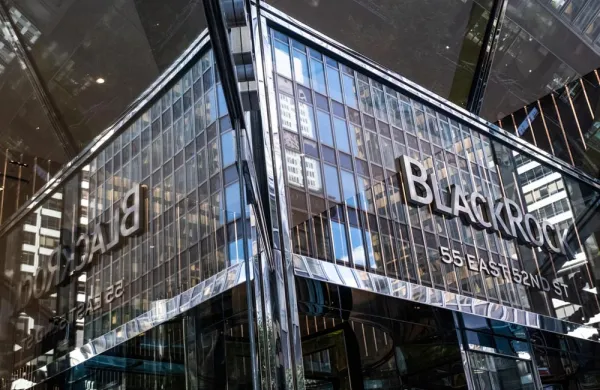Yo-yoing stock markets, negative interest rates, talk of currency wars: With so many factors roiling markets, it’s easy for investors to let short-term factors obscure the keys to long-term success.
Now a group of six leading institutions, led by the C$282 billion ($217 billion) CPP Investment Board, is fighting back. At the World Economic Forum in Davos, Switzerland, these institutions unveiled a new stock index that identifies companies with strong balance sheets, good governance and clear long-term strategies, and committed to investing $2 billion in products that track the index.
The initiative sends a signal that’s potentially much larger than that sum suggests. The members of the group, which include the Ontario Teachers’ Pension Plan, Dutch pension manager PGGM, Danish pension fund ATP, the New Zealand Superannuation Fund and Singapore’s sovereign wealth fund GIC, are among the world’s premier institutional investors and collectively manage more than $800 billion.
“It’s important that we work together to create positive incentives for corporations to move away from boilerplate quarterly reporting to more-long-term metrics,” Eloy Lindeijer, chief investment officer for PGGM, tells Institutional Investor. “We don’t necessarily want more information; we want more relevant information.” The aim, he says, is to make sure that companies don’t obsess about meeting earnings expectations and fail to lay the groundwork for future innovation.
“Having an index, you really have a tool for changing the mind-set of corporations,” says Poul Winslow, head of thematic investing and external management at CPPIB, which is committing to invest about $1 billion under the initiative. “What do they have to achieve to become one of the 250 stocks in an index like this?”
The star-studded investor list came together as an offshoot of Focusing Capital on the Long Term, a coalition of business and financial leaders concerned that corporations are sacrificing future growth and prosperity to please shareholders in the short term.
Mark Wiseman, Toronto–based CPPIB’s chief executive, and McKinsey & Co. boss Dominic Barton founded FCLT in 2013. Barton, who ran the New York–based consulting firm’s Asia business until 2009, was surprised by how nearsighted Western companies had become in contrast to their Asian peers. His longtime friend Wiseman saw how the trend was worrying even many corporate executives. More companies approached CPPIB looking to go private and avoid the quarterly hurdles set by Wall Street. The duo set out their goals in a manifesto titled “Focusing Capital on the Long Term,” which was published by Harvard Business Review in 2014. The coalition has attracted a mix of financial institutions and corporations to its ranks.
In March 2015, CPPIB put FCLT’s advice into action by commissioning S&P Dow Jones Indices and RobecoSAM, a Zurich-based sustainable investing arm of Dutch fund manager Robeco Groep, to design an index around the concept of long-term value creation. The two are known for their suite of sustainability benchmarks, but CPPIB made it clear that “this was not to be an ESG index,” says Alka Banerjee, S&P Dow Jones’s head of global equity and strategy indices. Although there tends to be strong correlation among governance, environmental and social issues, CPPIB wanted to highlight the tenets of the long-term movement rather than launch another sustainability index in an already crowded market, she says.
Over the next nine months, they settled on a formula that ranks companies based on their past ability to create value — measured by fundamentals such as return on equity, leverage and accrual ratio (a measure of earnings quality) — as well as their corporate governance policies. The methodology also includes a survey that asks companies to explain their long-term ambitions. The resulting index includes 246 companies that mirror the geographic and sector makeup of the S&P Global LargeMidCap universe that they are drawn from.
As of March 18 the new index was up 12.8 percent from its January 21 debut, beating the S&P Global LargeMidCap Index by 200 basis points. But the point of the index is all about long-term growth, and it seems to deliver on that measure, too. A regression over the past ten years shows the index would have outperformed the S&P Global LargeMidCap Index by 3.2 percentage points on an annualized basis. However, Banerjee notes that outsize performance was not the goal of the design.
The survey component, conducted online by RobecoSAM, was one of the key draws, as it encourages corporations to reflect on their behavior. The firm has been quizzing companies since 1999 on governance policies such as boardroom makeup, tax strategy and codes of conduct as part of its Corporate Sustainability Assessment. The index zeroes in on risk and crisis management, business ethics, innovation and supply-chain policies. For example, questions about risk culture seek to determine whether companies effectively enforce their risk management principles, identify long-term threats to their businesses and report them in the public domain. “The main goal is to get companies to be clear and report to investors on the sources of long-term value creation,” says Christopher Greenwald, RobecoSAM’s head of sustainability investing research. “And generally there is an intersection between sustainability topics and the sources of long-term value creation in many industries.”
Although CPPIB steered clear of environmental and social issues to avoid obscuring the long-termist philosophy, some organizations involved in FCLT deem these factors essential to a company’s longevity. “It’s not a political correctness exercise,” says Ole Buhl, head of ESG investing at ATP. “We can actually see that taking these things into consideration makes sense from a performance perspective, but you’re not always able to see it in the first year.” ATP takes advantage of its long investment horizon through dialogues with its portfolio companies about managing these risks for the future.
FCLT also urges investors to become active shareholders. One of its most outspoken members, BlackRock CEO Laurence Fink, sent a letter to U.S. and European corporations in February urging them to spell out their long-term growth plans.
Michelle Edkins, global head of BlackRock’s investment stewardship team, leads 22 specialists around the world in researching and engaging with companies on environmental, social and governance issues. “Squeezing out every last inch of performance this quarter and next quarter may be detrimental to long-term performance,” Edkins says, adding that companies must strike a balance between short-term financial health and long-term strategic goals. “For example, you can’t be cutting R&D every quarter to meet earnings objectives if you’re an innovation-based company,” she says.
So which company showed the most potential for long-term value creation in 2015? Ironically, that would be British American Tobacco, according to the metrics used in the Long-Term Value Creation Index. The London-based manufacturer of the iconic Lucky Strike brand of cigarettes got the highest score, inching past Unilever, the Anglo-Dutch consumer products company led by FCLT member Paul Polman.
BAT has led its industry in the Dow Jones Sustainability Indices for 14 years running through its efforts in sustainable agriculture and developing healthier alternatives to lighting up. In January, U.K. regulators granted approval for its e-Voke brand of electronic cigarettes to be sold as a medicine for quitting smoking.
Unilever offers a prime example of how companies can benefit from emphasizing long-term strategy. The maker of Dove ice cream bars dispatched with quarterly earnings guidance in 2009 to focus on generating consistent, sustainable growth in a volatile world, says Andrew Stephen, head of investor relations for the company. “That’s not the sort of performance that necessarily attracts someone who wants to make a quick return, but hopefully it does attract people who want to see a good competitive return on their investment over a few years,” he says.
Mission accomplished. The proportion of Unilever’s shareholders that are long-term by nature rose last year, Stephen says, and now more than 70 percent of the top 50 shareholders have been invested in the company for at least seven years. As Sue Scholes, chair of the U.K.’s Investor Relations Society, puts it, “How you do investor relations brings you the shareholder base you deserve.”
The FCLT plans to formally incorporate in September and bring a CEO and full-time staff on board to launch a new wave of research and public engagement. In the view of CPPIB’s Winslow, the organization isn’t just working for the good of the multinational corporations and giant pools of capital it counts as members. “We think all investors will benefit from this by avoiding short-term value destruction,” he says. “We’re all winners if we have a mind-set that is long-term.” •
Follow Jess Delaney on Twitter at @jdelaney_NYC.






